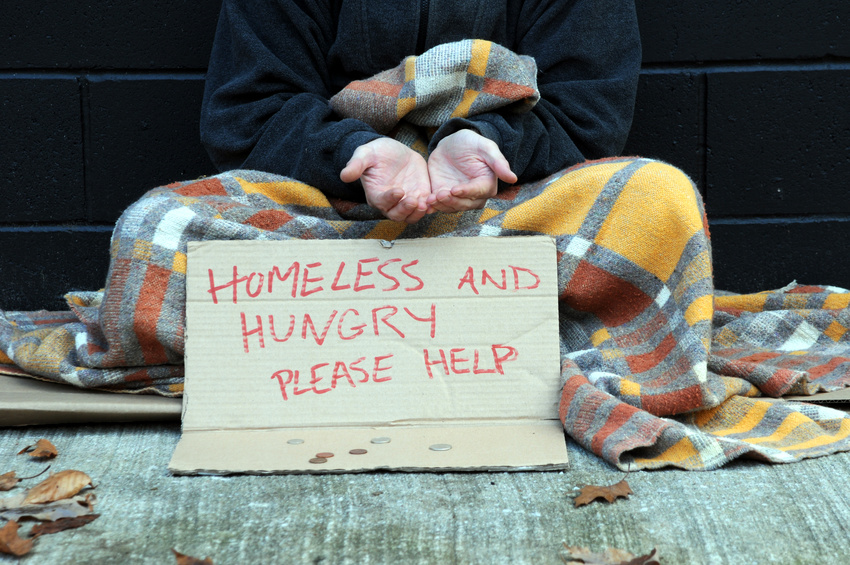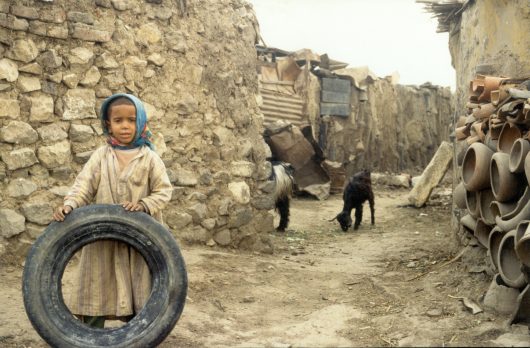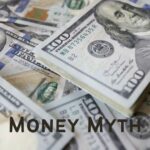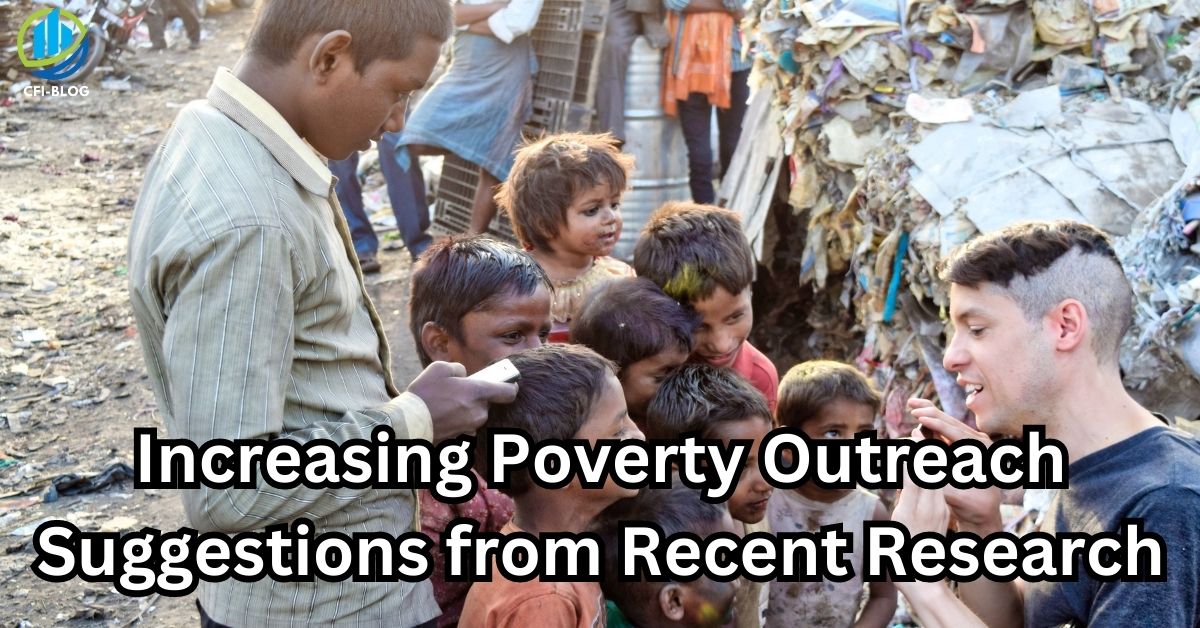Microfinance is failing on many counts. A more comprehensive method must be developed for better financial inclusion. Latin America has successfully constructed a framework for better financial upliftment and inclusion framework for ushering in an era of prosperity. Collaborating with 41 microfinance institutions, Latin American countries are showing the path as to how outreach programs reduce poverty and bring in financial inclusion. Due to its significant economic growth, Latin America has become a breeding ground for the microfinance industry.
However, the growth hasn’t been equal, and the population has been divided between class systemic fault lines, especially between urban and rural populations. Financial institutions that dole out credit to the financially marginalized and the economically restrained are increasingly becoming prevalent.
According to a study and report by the Consultative Group to Assist the Poor on its report on the cross-border lending program, the funding for microfinance institutions reached over 25 billion dollars in 2011. These microfinance institutions enable community outreach to poverty programs that give access to low-interest loans. According to an Inter-American Development Bank survey, the collective portfolio for average Latin Americans has reached $40 billion.
Over 1000 institutions have reached over 22 million clients and customers across the continent. However, the situation is not encouraging as one might think. According to a survey in 2014, the hyper-indebtedness of Latin American Countries has increased consecutively for multiple years. The microfinance industry has seen NPAs or non-performing assets rise, with people defaulting on their loans more frequently.
According to JP Morgan Global Investing Network survey data, 54% of investors demand competitive profit margin rates, 23% are below market target, and 23% need a capital reservation. This article explores how community outreach centers decrease poverty and analyses country by country to see how the microfinance industry affects them.
Analytical Framework
Before understanding the different aspects of poverty outreach programs, let us understand a few terms related to this project.
Definition of Poverty
The international poverty line was first put into guidelines by the World Bank in 1990. According to World Bank, poverty is the inability of a person to maintain a decent standard of living. The international poverty line is restricted to $1.25 daily for the poorest countries and 2.5 dollars per day for the average poverty line. Each country has its poverty lines.
Definition Relating to Poverty Outreach

Here are some of the definitions of poverty outreach:
- Poverty incidence– Poverty Incidence is the measure of poverty in a particular country. It is the percentage of the household, in particular, that makes less than the poverty-level income.
- Poverty Magnitude– It is the concentration of poverty in an area.
- Poverty Concentration– It is the percentage of microfinance institution clients living under poverty levels.
- Poverty Scale– It is the number of households that have received help from microfinancing.
- Poverty Penetration– The number of people that have access to microfinancing.
MFI Benchmarking | Country-wise
This article will talk about community outreach programs for people in poverty in each country and how the penetration of microfinance has helped them grow out of poverty.
Peru
Peru is often considered the “Andean Miracle,” having experienced an economic explosion over the last few years, when it comes to the adventures in love and credit reporting Latin America’s fastest and most stable economy, with GDP growth ballooning to 6.3% every year from 2002-2012, and the inflation rate fell to 2.8%. During the financial crisis of 2008, the country’s economic growth slowed to 0.9%, but it was the only country in Latin America to experience favorable growth in its gross domestic product.
However, Peru is heavily dependent on its natural resources like copper, zinc, gold, silver, lead, and iron ore, which they have a considerable portion of export. Other than minerals, they have other natural resources like fisheries, petroleum, lumber, and natural gas. The high GDP growth and low inflation rate attracted foreign investment and enabled the growth of the financial sector.
However, as promising as Peru’s future appears, only some or a few are perfect. The rural poverty of Peru stands at over 60%. Also, Peru has many other social and economic issues to work on, like income inequality, the ensuing wealth distribution disparity, rural poverty, environmental impact on the marginalized and the poor, ecosystem damage with activities like mining, a massive informal sector, and lack of social safety net.
Though the Peruvian government has taken steps for financial inclusion, such as cash handouts like Juntos, many are concerned that more is needed. According to information from the World Bank, financial inclusion is relatively low, with only 20% holding a formal bank account. Peru ranks low on the global financial index and Findex.
In 2013, Peru passed a law regarding electronic money, making it the only Latin American Country to do so. Peruvian government plans to roll out such community outreach poverty programs. The main reason for this concern is the over-indebtedness of microfinance companies. In 2013, Standard & Poor warned about Peru’s increasing delinquencies, non-performing assets, and the number of defaulters.
The lending assets are giving diminishing returns. This crisis has led to most microfinance institutions rejecting loan applications of people with more than one loan. There is also a banking divide in the country, with the more affluent people opening bank accounts, which leaves the unbanked community shut out of the financial market. However, the rise of the BiM money platform in Peru has contributed to financial inclusion.
Poverty Outreach
The scale of community outreach programs for people in poverty depends upon the number of households the microfinance industry reaches. A study was conducted among 142,048 clients of the MFI. From 2013-2014, it was found that people taking out loans had a 26% likelihood of living in poverty or below the national poverty line. This indicates approximately 36,932 clients are living below the national poverty level. Another survey conducted from 2009-2013 found that the average borrower had over a 40% chance of living under or dipping below the poverty line.
However, in 2013, the rate and likelihood of people living in poverty fell below 32% Under this survey, on average, 2000 borrowers lived below the poverty level. This indicates that microfinancing targets the poor, acting as community outreach centers to decrease poverty. With fewer people living in poverty in 2013-2014 than in 2009-2013, it is indicative that microfinancing has helped uplift people from poverty. It is also evident from these two surveys that microfinancing from 2013-2014 has reached a more significant number of people than in 2009-2013, which helped in poverty alleviating.
Penetration of Poverty Outreach
It is unanimously accepted that social outreach to families in poverty helps people out of poverty, but in that case, penetration of the poverty outreach programs is crucial and indispensable. In all surveys, it has been found that Microfinance institutions have better penetrations in cities and urban areas than in rural areas.
However, it should come as no surprise though. The urban areas have better infrastructure and a high concentration of affluent people. So naturally, access to loans becomes more accessible and efficient. So, there is a danger for MFI to become catered to wealthy people. Those who are poor and come from marginalized sections of society are most likely to be excluded from the benefits of microfinancing.
On the other hand, in rural areas, banking concentration and saturation are low and most likely to be minor economic participation. The rural population is far from the financial institution, which is their main reason for lagging economic participation. Thus, significant government investment in banking infrastructure and financial institution density must be significant. Access to loans and capital can be solved.
Giving access to loans and generous capital makes sense from a commercial standpoint. However, Peru’s high economic growth and rapidly increasing export has incentivized investors to invest capital in banking infrastructure and financial institution. Still, microfinance institutes refuse loans with over three loans in excess. The likelihood of debt consolidation is very low.
The government needs to impose strict regulations that can force these banks and lenders to invest in the lower strata of society. Recent data suggests that inequality in Peru is at record levels. According to Food and Agricultural Organizations, the Gini coefficient of Peru is a staggering 0.86 on a scale of 0 to 1, where 0 signifies absolute equality. The farmers in the agricultural sector do not own their land, which makes them vulnerable and precarious. They also have difficulty finding loan officers who can give loans to increase their production.
Columbia
Columbia launches a national financial inclusion framework based on the principle of free trade and multiple agreements with countries across the globe. This approach to economic growth has secured them from the financial crash of 2008. Since 2011, Columbia’s economic growth has reached 4% yearly, consistently performing well over the decade. This has incentivized Columbia’s credit reputation, and all three credit bureaus have raised Columbia’s credit grading.
Being the largest coal exporter and fourth-largest oil exporter in Latin America, the economic growth could be improved by infrastructure and fluctuating security. However, Columbia’s export is heavily dependent on mineral and natural resources, which can fall under the instability of price fluctuations. This phenomenon is called the Dutch disease.
The unemployment rate stands at 9.7%, the highest of Latin American countries. The country has taken huge strides in reducing poverty, but the divide along class divides between the urban and rural populations. The poverty rate among the rural population is above 46% compared to the urban poverty rate of 28.4%.
The people below the poverty rate are 22% in rural areas and 6.6% in urban areas. Regardless, Columbia has a high Gini coefficient of 0.53 which signifies high equality. In June 2011, the government of Columbia established the Department of Social Prosperity to implement social and economic reforms that will elevate suffering from poverty and social vulnerability. The DPS collaborates with the National Agency for Overcoming Extreme Poverty, intending to uplift the people of Columbia through many social programs.
Regardless, the microfinance industry has grown over the past few years. Reports suggest that the microfinance industry has grown by 71%, and cooperatives and NGOs have risen by 8% and 17%, respectively. However, the large MFI has merged into large banks and gone under the supervision of the banking regulatory body called Superintendencia Financiera de Colombia. In 2011, a Columbian financial networking body called Asomicrofinanzas called and brought together all financial institutions, including banks, microfinance companies, and NGOs.
A survey of September 2013 reveals that 71% of the population had access to at least one financial service. Financial inclusion has evolved, and account holders have grown by 7.2%. So the data survey shows encouraging numbers. However, those numbers are not the whole story. It has been revealed that about 51% of those accounts have been inactive for over six months.
The Columbian government will need to bring investment and innovations to ensure financial activity and bank account usage. But, the Columbian government has responded to this problem and is actively trying to solve this problem. Lawmakers have introduced policies that have expanded banking services and incentivized the opening of bank accounts.
Poverty Outreach
This section delves into the scale of community outreach poverty programs and how microfinance effectively reduces poverty. There were three surveys conducted to gauge the poverty level of the country. Here we shall refer to them as MFI A, MFI B, and MFI C. The surveys were conducted in 2011 with random people taken as samples. In 2011, MFI A had about 45,441 clients, absorbing 17,268 clients living below the poverty line.
According to World Bank, the poverty rate in Columbia stands at 34.1%. The significant concentration of MFI A is due to its targeted approach to the rural population living below the poverty level. They have a higher concentration of rural dwellers than urban dwellers because the poverty rate of rural areas is higher than urban areas. The survey shows that 80% of MFI A’s clients are rural residents.
During the survey of MFI Cs, the sample size of clients consisted of both old and new clients. It was found that of almost 10,241 clients, approximately 31% were likely to live in poverty. MFI only had urban areas and hence can be dismissed. Most MFI clients are from rural areas, which means MFI B is over-represented by urban dwellers. This can give out manipulated data and distorted data. However, we can infer how outreach programs reduce poverty.
Penetration of Poverty Outreach

Recent data and Columbia’s economic performance show that fintech for financial inclusion the path forward for Columbia is thriving to cover all sections. The microfinance industry has been digitizing for a long time, making outreach programs and poverty alleviation schemes much easier to implement. For MFI A, the penetration has peaked in Putumayo, Huila, and Nariño. These regions have one of the highest poverty concentrations in the country.
After the infiltration of MFI A, it has noticed a sharp decline in the poverty rate. According to the survey, MFI A had about 50,000 clients in the region, with about a 35% likelihood of living below the poverty line. At the same time, MFI C, conducted afterward, had a 25% likelihood of living below the poverty line.
While many researchers have credited the sharp decrease in poverty to the penetration of community outreach programs for people in poverty, loan officer incentives have helped drive people towards microfinancing and financial inclusion. Data shows that MFI A and MFI B loan officers were incentivized to lend money to poorer people. The management was incentivized to serve the under-represented community and primarily the unbanked community of the region. The inclusion of the unbanked community enables poverty reduction in significant ways. Regardless of the penetration of microfinance institutions, they reduced poverty levels by only significant margins.
Bolivia
Since the global recession, Bolivia has grown 6.8% yearly, the highest growth rate among Latin American countries. The main factors that led to this were mainly attributed to its rich resources of hydrocarbons and minerals, which have become valuable over the years.
Over the years, especially from 2004 to 2006, export grew from 2.2 billion dollars to 6.8 billion dollars. Bolivia also had the advantage of reducing public debt, which it owed to G8 and multiple other organizations. Bolivia reduced its debt by 64% of its current stock debt that it owed externally. This fiscal prudence paved the way for numerous social programs. Penetration of access to credit and banking services and increase rural consumption by up to 33%.
According to Global Microfinance in the report 2013, Bolivia ranked at the top among Latin American countries for a favorable environment for microfinance. Studies have confirmed that the cash handouts and increased liquidity towards the economically marginalized community enabled economic boosts and acted as a multiplier effect for consumer spending.
In 2013, policymakers passed the Law of Financial Services in Bolivia. The Law explicitly states that financial inclusion for uplifting the poor via community outreach poverty programs should be the state’s topmost priority. Bolivia’s financial regulator, Autoridad de Supervisión del Sistema Financiero (ASFI), has conducted a survey revealing that areas with a population above 2000 had ATMs, bank branches, and other financial services for 40-60% of the population. The economic intelligence unit confirmed this fact.
According to this legislation, the banking sector has to restrain its interest rates for specific loans, especially those taking loans out for real estate, social housing, and other production investment and portfolio.
A quota system was established in the banking system where the banks must ensure their assets go equally to different industrial sectors. The microfinance industry must ensure that their interest rates stay below 11.5%. The microfinance institution must disburse at least 60% of its assets to the productive economy, such as social housing or other sectors which generate jobs for low-skilled workers.
The SME banks must disburse 50% of their assets in the product manufacturing industry and low-skilled generating jobs, out of which at least 25% must go to small, medium, and micro businesses. The law makes provisions for investing in agricultural infrastructure, fisheries, livestock, forestry, and hunting. The second priority is the electrical industry, metallurgy, mining, manufacturing, and oil and natural gas extraction.
Though numerous industries are rapidly growing, it is uncertain how much the microfinance industry or the expansion of the banking system has any effect on the country’s economy. However, it is believed that in some sections of the financial community, the penetration of microfinancing services will bring financial inclusion. This is why financial inclusion in Nigeria lagging due to the absence of microfinancing services.
Poverty Outreach
Three microfinancing penetration surveys have been conducted to detect poverty outreach programs. It was discovered that in each survey, referred to as MFI A, MFI B, and MFI C will have 42%, 39% and 37%, respectively, are likely to be in poverty. Bolivia has the most favorable environment for a microfinance industry, and its extensive penetration of poverty outreach has reduced poverty. The Financial Law passed in 2013 ensures the microfinance industry serves to alleviate poverty. FINRURAL hasn’t decided which metric to use to detect poverty and microfinance penetration.
MFI C has conducted a series of surveys of poverty concentration from 2005 to 2013, revealing poverty rates of 38%, 40%, 35%, 37%, 37%, and 39% each consecutive year, with an average of 37% until 2013. This signifies that MFI C has served 59,417 clients likely to live below the poverty line. Consecutively, 65798 clients lived below the poverty line in 2012 and 2013, and 69431 lived under the national poverty line.
According to World Bank data, the poverty rate in Bolivia is standing at 45%, in line with the guidelines of the accepted international definition of poverty. MFI B has more reach in areas of acute deficiency of banking services. That is, it is more concentrated in rural areas.
Penetration of Poverty Outreach
In this section, penetration of poverty outreach differs across regions, especially along urban and rural fault lines. We try to analyze the microfinance Institution penetration concerning every region. According to the survey, the MFI has reached its peak penetration in La Paz, Cochabamba, and Oururo. MFI has yet to reach that level of spread in other areas. In both microfinance surveys, the lowest penetration rate was in Tarija. Tarija has the highest concentration of rural poverty in the country. Poverty incidence is the highest in the country at 89%, and urban poverty at 45%.
The incentive for loan officers and benefits regarding disbursement of incentives incentivizes them to expand loan services to the community and regions where it needs the most. The incentives of the loan officers sometimes depend on the quality of assets and portfolios the loan officer can create. The management and credit bureaus of Bolivia create such a system.
But it has its drawbacks. If the loan officer is incentivized based on the quality of the portfolio, it will urge them to adhere to more affluent clients rather than the poor ones who need it. However, MFI B fixes this problem by having loan officers have fixed salaries. But the loan officers are getting bonuses on top of their salaries based on their loan disbursement and portfolio quality. MFI B, in the first place, aimed to lend out sensible loans to prevent over-indebtedness. MFI C had the purpose of discussing the loan repayment capacity. However, constant lending can lead to depleting savings. This is why people aren’t saving money in Mexico because of over penetration of the microfinancing industry.
Frequently Asked Questions (FAQs)
Q1. How to calculate the poverty line?
The poverty line was founded in 1965 as the latter half of the decade ushered in the era of the war on poverty. The United States federal government calculates poverty based on two surveys and statistics: the Official poverty measures and Supplementary Poverty Measures. In 2019, for a family of four and two children, $25,000 was considered the poverty line. The poverty line has recently shifted to $28,000 for the same family unit. Internationally, United Nations defines poverty as earning $1.98 daily. Other than that, every nation has its poverty line.
Q2. What is a simple poverty index?
The simple poverty index is the measure of poverty living in a particular region. Technically, it is the ratio or proportion of the population living below the poverty line. The poverty index is the income-gap ratio, which measures the income deficit required for basic sustenance.
Q3. What is the best measure of poverty?
There are no best measures of poverty. According to the world bank, a person living under $1.96 is considered below the poverty.
Conclusion
We have understood through this article that microfinancing and the extension of banking services have multiplier effects on the economic situation of a country. Over the years, Latin American countries have successfully built a guideline towards economic prosperity. Latin American countries have gone through political instability and risen from the ashes to stabilize their economy, alleviate poverty and reduce wealth inequality. However, microfinance has its limitations. As we know from this article, microfinance has benefited countries like Peru and Columbia. But it has a negligible effect on Bolivia.
We recommend research papers like the 2013 Financial Law Paper for future purposes. The financial framework was passed in Bolivia to understand the guidelines for progressing toward a robust and prosperous market, making it one of the best environments for microfinance.
Author Profile

- Jonas Taylor is a financial expert and experienced writer with a focus on finance news, accounting software, and related topics. He has a talent for explaining complex financial concepts in an accessible way and has published high-quality content in various publications. He is dedicated to delivering valuable information to readers, staying up-to-date with financial news and trends, and sharing his expertise with others.
Latest entries
 BlogOctober 30, 2023Exposing the Money Myth: Financing Real Estate Deals
BlogOctober 30, 2023Exposing the Money Myth: Financing Real Estate Deals BlogOctober 30, 2023Real Estate Success: Motivation
BlogOctober 30, 2023Real Estate Success: Motivation BlogOctober 28, 2023The Santa Claus Rally
BlogOctober 28, 2023The Santa Claus Rally BlogOctober 28, 2023Build Your Team – the Importance of Networking for Traders
BlogOctober 28, 2023Build Your Team – the Importance of Networking for Traders

